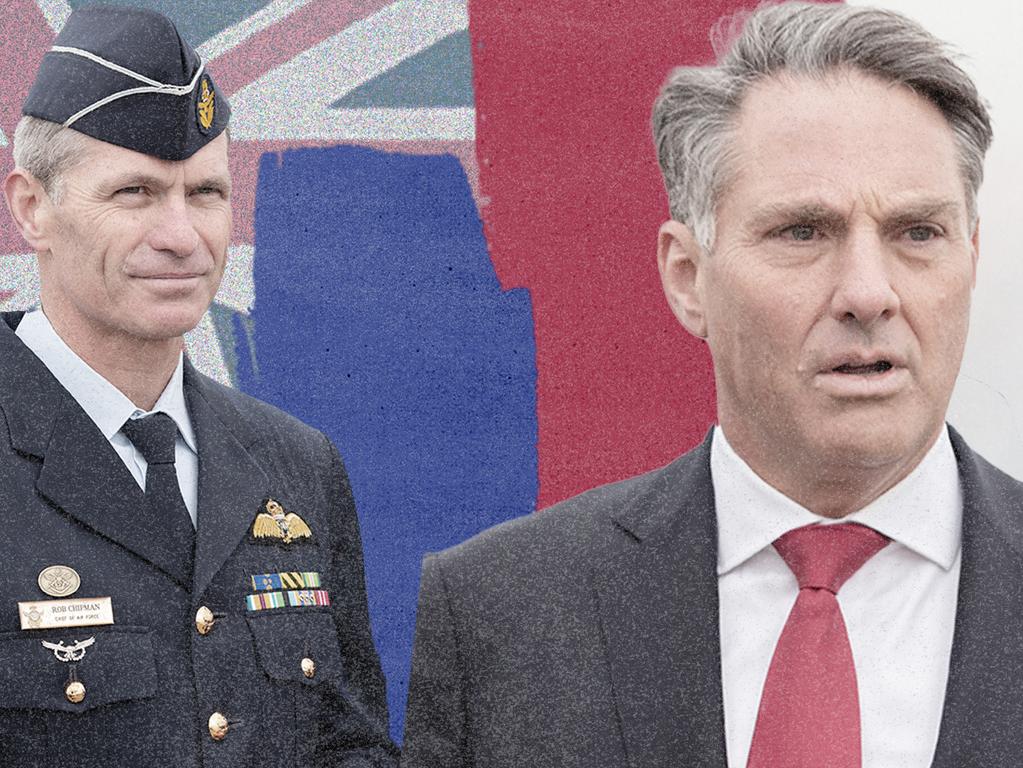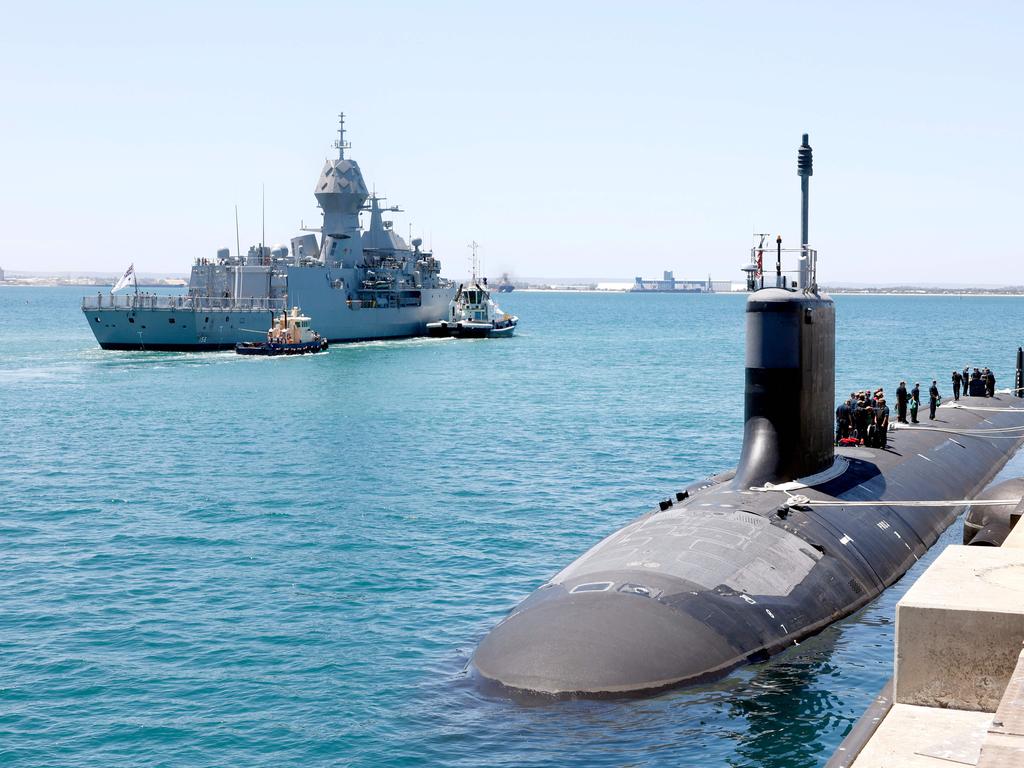Defence funding strategy: Long-range billions to counteract China
Labor will boost Defence spending by $50bn over the next decade and claw back $72bn from dumped weapons programs to pay for new ones, as the government seeks to deter China.

Labor will boost Defence spending by $50bn over the next decade and claw back $72bn from dumped weapons programs to pay for new submarines, ships, missiles and drones, as the government seeks to deter an increasingly aggressive China.
The swath of cuts includes a decision not to proceed with an extra squadron of F-35 joint strike fighters, saving $3bn, and the cancellation of two large support vessels for the navy that would have cost $4.1bn.
Defence will get $330bn worth of new weapons systems over 10 years, including long-range missiles, air and maritime drones, and enhanced air defences, to deny potential adversaries the ability to attack the Australian mainland or deployed Australian forces.
Unveiling the government’s new defence investment program on Wednesday, Richard Marles revealed defence spending would rise by $50.3bn over the decade, but only $5.7bn of the new money – or just over 10 per cent – will hit the budget in the next four years.
As well as new weapons, the Defence Minister flagged new measures to address the ADF’s workforce crisis, saying the government would look at recruiting New Zealanders and Pacific Islanders to plug a 4400 shortfall in uniformed personnel.
Mr Marles, who also released a new national defence strategy, warned Beijing’s growing military build-up and tensions between China and the US had created an environment “where the risk of miscalculation is more ominous and the consequences more severe”.
The defence strategy, to be updated every two years, warns China is seeking to “change the current regional balance” through increasingly coercive tactics in international waters and airspace.
It reiterates Australia no longer has the luxury of 10 years’ “strategic warning time” before a potential conflict, calling for a whole-of-government effort to improve national resilience.
But, amid calls for a more rapid transformation of the ADF to deter rising threats, Mr Marles blasted those who argued Australia would play a major role in a “worst-case contingency” in the next few years, declaring such analysis “lacks wit”.
“As a medium power, we are never going to bring to bear the kind of military capability that exists in the United States or China,” he told the National Press Club.
“The strategic problem that we are trying to meet, that we’re trying to solve, is making sure that in a much less certain world in the future, we are able to resist coercion, and maintain Australia’s way of life.”
He said an invasion of the Australian mainland was “an unlikely prospect in any scenario”, and the nation’s defence hinged on the collective security of the region.
The new $330bn investment program replaces a $270bn Coalition plan. It includes $72bn in savings from axed programs, $22.5bn of which will flow into the Defence budget in the next four years.
The cuts include the deferment of plans to purchase an extra 28 joint strike fighters for at least a decade, the axing of the navy’s planned new support vessels, and the redirection of $1.4bn in funds from Canberra facility upgrades to improve the ADF’s Top End bases.
Planned nuclear submarines and warships for the navy soak up the lion’s share of the decade-long investment program, accounting for up to $76bn and $69bn respectively.
The army will get up to $44bn to transform into an amphibious-capable force modelled on the US Marines, while the air force receives up to $33bn over the decade.
The plan includes $14bn to $18bn for missile defence systems, but was unclear on whether already-announced ballistic-defence and medium-range air-defence programs would continue as originally planned.
The blueprint includes $300m over the next four years for new drone and counter-drone systems, while a newly announced $1bn will be spent over the forward estimates to fast-track delivery of land-fired precision strike missiles, and underwater autonomous vehicles including the in-development Ghost Shark.
Mr Marles said the government was ploughing more money into Defence than ever, lifting outlays to 2.4 per cent of GDP by 2034, compared with a budgeted 2.1 per cent under the Coalition.
“Putting aside adjustments like foreign exchange and operations, the additional $5.7bn will be the biggest lift in Defence expenditure over a forward estimates period in decades,” he said.
Mr Marles said the government was also budgeting more responsibly, saying the opposition had failed to fund up to 40 per cent of its Defence equipment promises when it was in government.
But opposition defence spokesman Andrew Hastie said Mr Marles had failed a “leadership test”, branding the Defence funding boost as “very modest”.
Mr Hastie attacked the government’s plan as “vague”, saying it failed to adequately set out the threats the nation faced, and vowed the Coalition would match and exceed Labor’s funding commitments. “We are committing to more Defence expenditure than the Albanese government,” he said, without offering details.
Strategic Analysis Australia research director Marcus Hellyer said the plan included some positive elements, and showed the government was beginning to take seriously the need for uncrewed aerial and maritime systems.
But he questioned the adequacy of the funding boost, which amounted to an extra 2.4 per cent a year compared with the Defence budget’s current forward estimates.
“That’s better than nothing, but if we have the worst strategic circumstances since WWII, and we have no more 10-year warning time, and if we’re trying to stand up a whole lot of new capabilities, you’d want to see more of the additional money brought forward into the next four years,” Mr Hellyer said.
“There is new money there but it’s concentrated in the back half of the decade, which doesn’t align with the narrative of worsening strategic circumstances.”
Australian Strategic Policy Institute defence program director Bec Shrimpton said there were no short-term fixes in the new investment plan.
“The government knows it can’t fix its problems quickly or create the focused and integrated force it wants – and will not have its desired fit-for-purpose force across all domains and enablers within the next five to 10 years,” Ms Shrimpton said.
“That said, an increased focus on autonomy and robotics … can play an important role in filling a capability quickly from commercially available solutions.”








To join the conversation, please log in. Don't have an account? Register
Join the conversation, you are commenting as Logout